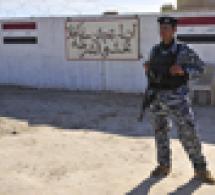 |
 |
How to Leave Afghanistan Responsibly
How to Leave Afghanistan Responsibly
All eyes are on the NATO conference in Lisbon this Friday, where military and civilian leaders will discuss the future of the Afghan war and how long coalition forces will stay engaged. While this may feel like a new challenge, in fact, it is not.
The United States has already experienced two types of military transitions in the Iraq war. The first occurred from 2004 to 2006, where responsibilities for security and governance were handed over to the Iraqis even as the security situation continued to deteriorate and even as their governing capacities were insufficiently developed. This approach was widely deemed a failure. The second approach began in 2007 and is broadly viewed as successful thus far.
There are 6 vital lessons the U.S. and her allies should remember from Iraq and apply to Afghanistan. While they may be applied differently due to the unique challenges in Afghanistan, they are still very important guiding principles that should not be ignored.
In ISW’s latest backgrounder: Iraq's Lessons for Transition in Afghanistan, LTG James Dubik (ret.) and Deputy Director Marisa Cochrane Sullivan discuss how policymakers in NATO capitals and practitioners in Afghanistan can learn from the Iraq experience when considering their own ‘transition’ dynamics and timetables.
Additionally, ISW’s latest Order of Battle (ORBATS): Afghanistan ORBAT and Iraq ORBAT, are available to keep you up to date with all the latest developments in theatre.
